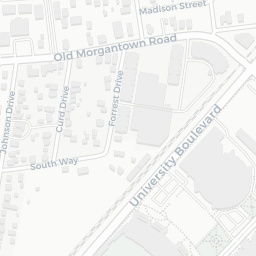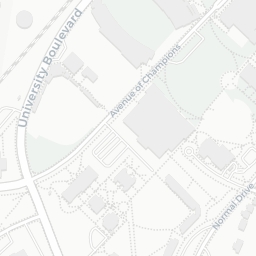History of WKU ROTC
The National Defense Act of 1916 authorized the establishment of Army Reserve Officers' Training Corps programs to train officers on the campuses of universities across the nation. The Army ROTC program at Western is one of the oldest in the state and traces its origin to this Act and the Spring of 1917 when the United States entered World War I. At that time male enrollment on the campus of "Western Kentucky State Normal School" was only 264 due to the great interest and participation in the war effort by the citizens and young men of Kentucky. The first military training presented on campus was given by US Army trainers to the "Student's Army Training Corps" during the Spring of 1918.
In September 1918 the Board of Regents empowered President Henry H. Cherry to take steps to secure academic and vocational units of the Student's Army Training Corps. On 1 October 1918 the War Department authorized the formal establishment of the S.A.T.C. as a part of Western Kentucky State Normal School. In addition to providing limited basic military training on campus through this program, the federal government also erected barracks to house participating students and provided other associated facilities. These SATC units grew into the Reserve Officers' Training Corps which became a permanent part of the university on 28 January 1919. First Lieutenant Owen Ellsworth, USA, assumed temporary command of the Corps upon its formal activation and in March 1919 Lieutenant Colonel Wilford Twyman, USA, was assigned as the first Professor of Military Science and Tactics.
The Corps was first organized as a Junior Division unit and offered only two years of basic military training. An ROTC Rifle Team was established and brought distinction to Western and the Cadet Corps by winning the National ROTC Rifle Match sponsored by the War Department for six consecutive years, from 1928 to 1933. But the students who desired an Army officer's commission were required to transfer to another institution offering a senior ROTC program. Western's junior ROTC unit was maintained until September 1935 when a Senior Infantry Branch Oriented Division was organized and placed under the command of Major John Robeson, USA. This Infantry oriented program was directed toward the production of Infantry Lieutenants and encompassed subjects as light and heavy infantry weapons, infantry tactics, communications, transportation, physical conditioning, and leadership.
A further addition to the ROTC program occurred on 4 February 1937 when the National Society of Pershing Rifles granted a membership charter to the cadet company at "Western Kentucky State Teacher's College". The cadet company was designated Company B, 3rd Regiment, National Society of Pershing Rifles and was founded to enhance esprit de corps and promote the highest levels of proficiency in drill and ceremonies, basic leadership, and military bearing among members of the cadet corps.
Western gained further distinction in 1937 by commissioning its first Senior ROTC cadet class in May of that year. Throughout the Second World War, Western continued to produce commissioned officers, many of whom served with great distinction in both the European and Pacific Theaters. With Congressional passage of the National Security Act of 1947 the U.S. Air Force was established as a separate branch of service.
The Army ROTC program was modified the summer of 1947 to include an Air Force ROTC program on campus and the first Professor of Air Science, Major William N. Pace, Jr., was assigned to Western in late 1947. In 1949 Air Force ROTC became a separate organization and both Air Force and Army ROTC Instructor Groups produced officers for service during the Korean War period. Based on enrollment, the increasing technical complexity of Air Force equipment, and lack of an engineering college at Western, the Air Force ROTC program was terminated on 1 July 1957. During its 10 year life span the program produced over 300 Air Force officers and contributed yet another dimension to the service to the nation by "Western Kentucky State College".
In December 1953 the cadet corps petitioned the Scabbard and Blade National Honor Society for establishment of a cadet company at Western. On 16 January 1954 a formal charter was issued by the National Society and established Company C, 11th Regiment, Scabbard and Blade National Honor Society at the college. Since its origin Company C has stimulated interest in the Profession of Arms, recognized and developed qualities of leadership, honor, and academic achievement, and created a better understanding of the military profession among the advanced course cadets eligible for membership.
A major change in the ROTC program at Western occurred in 1954 when the Infantry Branch Program was converted to the General Military Science Program. This new program was designed to prepare senior division cadets for commissioning in any of the Combat, Combat Support, or Combat Service Support branches of the Army. The program enabled qualified cadets to enter the service branch of their choice. ROTC cadets received another benefit in February 1962 when the members of the Committee on Curriculum and Instruction and the Board of Regents approved the awarding of an academic minor in Military Science for completion of the ROTC program.
On 13 October 1964 President Johnson signed into law the ROTC Act of 1964, popularly referred to as the ROTC Revitalization Act. This Act was designed to increase the scope of campus ROTC activities and offer greater opportunities for participation in the ROTC program to students. The Act authorized a two year Advanced Course Program for qualified Junior College transfer students and students who did not participate in the ROTC Basic Course to supplement the four year program. This two year program would start with a six-week long ROTC Basic Camp to qualify these students for entry into the Advanced Course and then be completed in the same manner as the four year program during the student's last two years before graduation. Other provisions of this Act included a substantial increase in the number of Army ROTC scholarships awarded by the Department of the Army each year, an increase in the monthly subsistence allowance paid to Advanced Course cadets, payment of a clothing allowance to newly commissioned Second Lieutenants upon their call to active duty, and establishment of Junior ROTC units at secondary schools.
In September of 1964, Pershing Rifles Company B-3 initiated sponsorship of a female auxiliary organization known as the Rebelettes. This organization provided honorary sponsors for the ROTC cadet corps and established a female drill team to compete in organized drill meets against other universities. The Rebelette drill teams have been highly successful in exhibition drill competitions and were selected as the National Champions in 1967, 1973, and 1975. The famous Rebelette "Garter Salute" and silent drill routines highlight their excellence in drill and ceremonies and their contributions to the esprit de corps.
In 1964 "Western Kentucky State College" dedicate a new rifle range for use by the cadet corps. In 1968 the National Rifle Association would become the sponsor of the team and in 1979 the varsity rifle team would become affiliated with the National Collegiate Athletic Association continuing the long history of excellence in marksmanship at Western.
Western's ROTC program added another extra curricular organization in October 1967 when the Special Forces Company was formed. Prospective members were challenged with an intensive pledge training program. Chartered to further military excellence in tactical skills, small unit leadership, physical fitness, and techniques of unconventional warfare, the organization provided an opportunity to apply classroom skills and knowledge to realistic training situations under arduous conditions in all types of terrain and increased tactical proficiency of the corps.
The U.S. Congress furthered the opportunities for female students by authorizing females to participate in the ROTC academic program in September 1973. Western Kentucky University's first female officer, Second Lieutenant Lynne F. Berry, was commissioned into the Military Intelligence Corps, USAR, 14 May 1977. Starting with school year 1978-79, the U.S. Congress authorized greater flexibility in the ROTC program by allowing students to be commissioned under provisions of the Early Commissioning Program. This program allowed a student with prior military experience to gain placement credit for one or both years of the ROTC Basic course and enter the Advanced Course during his freshman or sophomore year at the university. At the completion of the ROTC Advanced Course the cadet would be commissioned and perform reserve forces duty while completing degree requirements.
In May 1979, the Congress authorized another change in the Army ROTC program by authorizing cadets to participate in the Simultaneous Membership Program. Under this program, ROTC cadets in the Advanced Course simultaneously enlisted in either the U.S. Army Reserve or Army National Guard, were designated officer trainees, and performed the duties of a Second Lieutenant in their units gaining valuable experience before commissioning. Both of these programs were warmly received by the Corps of Cadets and expanded the opportunities for realistic preparation for both active or reserve forces duty.
In April 1980 the WKU Instructor Group was given the mission of establishing a new Army ROTC Program at the University of Louisville. Cadre members organized, equipped, and developed a program of instruction modeled after the WKU program. The U of L program began independent operations in August 1982.
In August 1983 a difficult decision to retire the Pershing Rifles Company and Rebelette Auxiliary was made by the Professor of Military Science. Replacing these units was the Organization of the Red Knights. Although not affiliated with a National Association, the Red Knights continued the excellence in drill and ceremonies, presentation of the official colors, and demonstration of the highest standards of military bearing within the Corps of Cadets.
In the spring of 1996 the WKU ROTC Alumni Association was established along with the induction of 7 honored alumni into the ROTC Alumni Hall of Fame.
November 2003 saw the addition of a Veteran’s Day Ceremony at Guthrie Tower and a partnership school. Murray State University became part of the Western Kentucky ROTC Program and began contracting cadets in the fall of 2004.
In the spring of 2005, a classroom was dedicated to a WKU ROTC graduate. The MS100 room became the Captain Charles F. Thomas IV Room of Honor.
Military Science and Leadership
Diddle Arena 2027
1605 Avenue of Champions,
Bowling Green, KY 42101-1030
(270) 745-4293
Additional Information




















